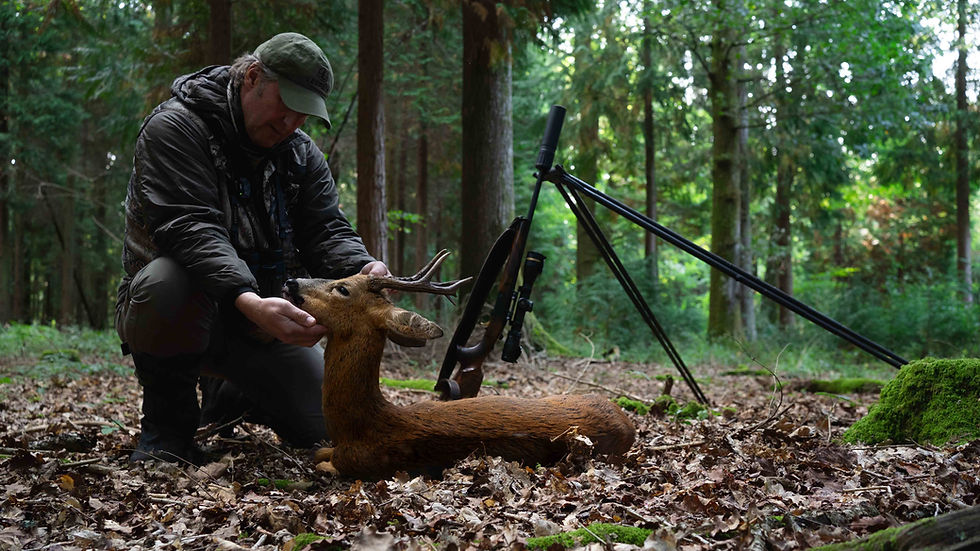November: The Shift into Cull Season
- Owen Beardsmore

- 13 minutes ago
- 3 min read
As we near the end of October, the colours across the woods have begun to turn. The beeches are copper and gold, the oaks heavy with acorns, and the hedgerows are thick with sloes and berries. It’s been an unseasonably mild autumn — one of those years where the leaves have clung on longer than usual and the first real frosts still haven’t arrived.
Across much of the country, oak trees appear to be in a mast year, producing an exceptional crop of acorns. It’s a clever natural strategy to secure the next generation of oaks, but it also means that wildlife, deer included, are spoilt for choice when it comes to food.
For us, as deer managers, that abundance changes things. With the woods full of acorns, chestnuts, beech mast and crab apples, deer will feed heavily on natural food sources for longer, reducing their reliance on any supplementary feed sites until later in winter. It’s worth noting how this affects movement and behaviour, particularly around your feeding area sites.

Changing Focus
November always feels like a turning point. The clocks have gone back, daylight hours are fading fast, and evening stalks are getting shorter by the week. The fallow rut has now eased off in most places, though some younger prickets may still be hanging about with mixed groups, testing their luck as the last few does come into season.
Our attention now shifts from bucks to does — the core of the cull season. This is where the real work of deer management begins: structured, selective, and with welfare at the forefront. It’s an important time to make progress on planned culls before winter sets in properly, ensuring populations are balanced and sustainable.
Cull decisions at this stage should take into account herd condition and habitat pressure. Removing the right number of females now helps maintain the health of the remaining population through the harder months ahead, when browse becomes scarce and energy needs rise.

Fieldwork and Preparation
November is also a month for good groundwork. Check your high seats, especially those that will see regular use over winter and make sure rides and sightlines are clear. Fallen branches and regrowth can quickly obstruct key shooting lanes, so it’s worth spending a morning on maintenance before the weather worsens.
With such an abundance of natural feed available, you may find deer aren’t holding to the usual areas. Be adaptable. Focus on transition zones between woodland and open ground where deer can feed and bed down close by. It’s also worth topping up mineral sites, as they’ll still be well used even while food remains plentiful. Remember, Fallow bucks will be exhausted from the last few weeks of rutting activity, don't be surprised to find them non-existent for the foreseeable as they lay up and get some much needed rest!

Cull Planning and Welfare
Early-season culling of does provides a valuable opportunity to assess herd dynamics and body condition. Carcasses are generally in good weight after a rich autumn, and venison demand is typically strong in the run-up to Christmas. But above all, November is a time for careful, considered stalking. Shots should always be taken with welfare in mind — clean, efficient, and under calm conditions.
The mild weather may keep deer active longer into the evenings, but as soon as the first hard frosts arrive, expect their behaviour to change. Cooler temperatures will tighten movement patterns and make deer more predictable around favoured feeding areas, especially where natural food has been exhausted.
In Summary
November marks the steady transition into the heart of the cull season, with a focus on stewardship, balance and welfare. With an exceptional mast year and mild conditions still shaping deer behaviour, it’s a time to stay observant, effective and flexible in your approach.
Good management now will carry through the winter and into the spring, setting the tone for a healthy, well-balanced population in the seasons ahead.







Comments